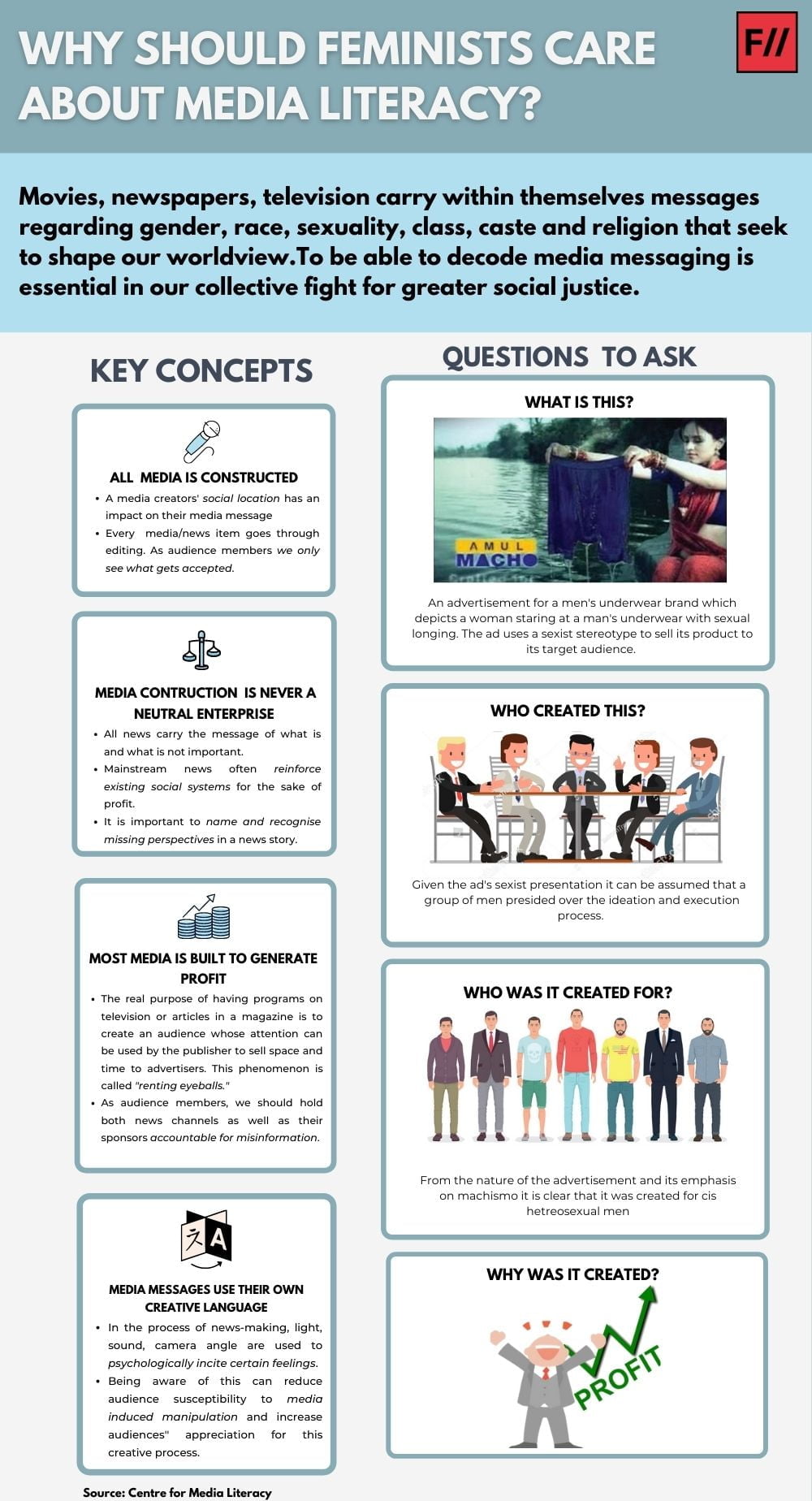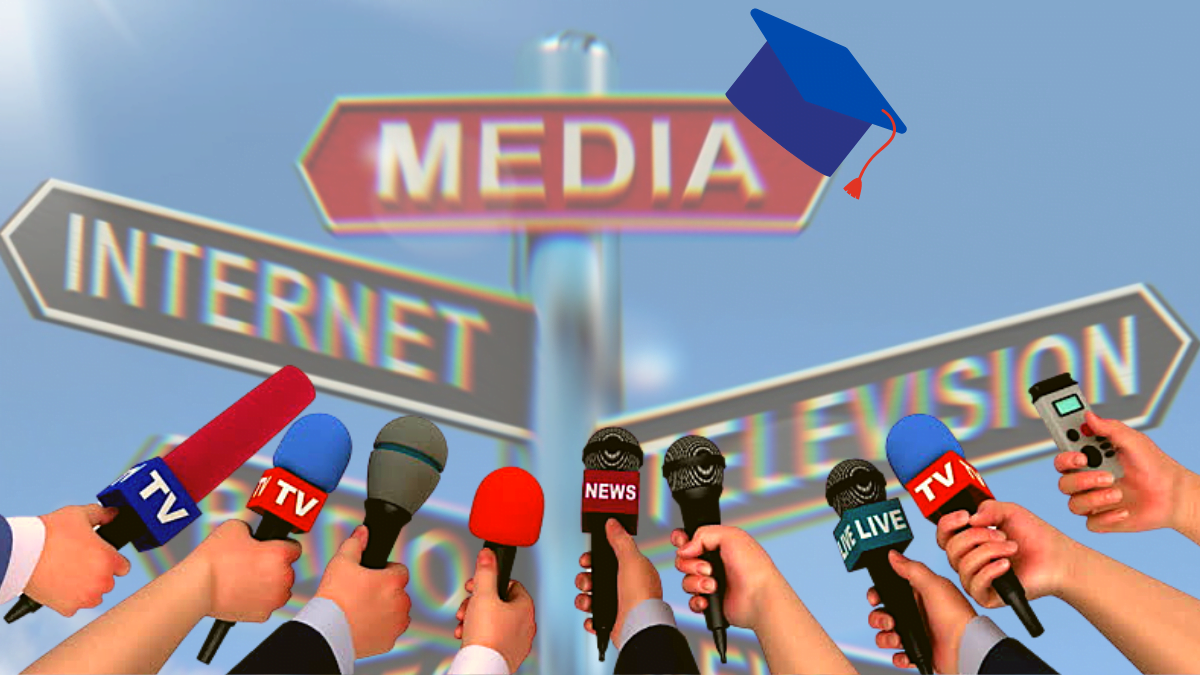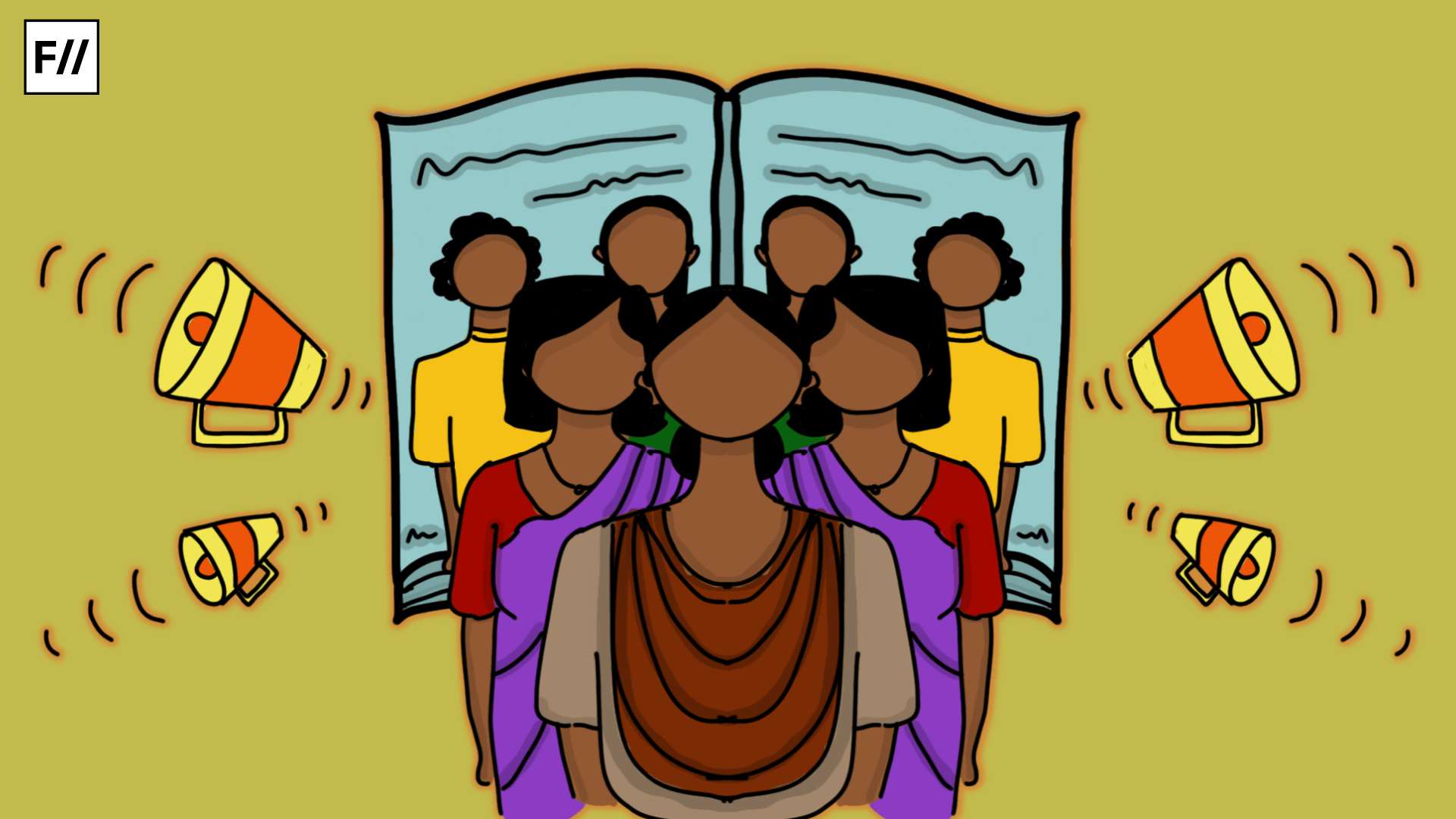Media plays a huge role in shaping our perception of ourselves and of the world we inhabit. Therefore, it is of critical importance that feminists concern themselves with media messages and its insidious effects. According to the Centre of Media Literacy, media literacy provides a framework to access, analyse, evaluate, participate and create media messages in a variety of forms: from print to video to the internet. Media messages are created by human beings which makes every piece of media, by its very nature, a carrier of numerous assumptions and biases.

Movies, television shows, magazines, newspapers, Instagram filters etc. carry within themselves messages regarding gender, race, sexuality, class, caste and religion. To be able to decode this messaging is essential in our collective fight for greater social justice. To become media literate, therefore, means learning to decipher signs, symbols and language of our media means. A few key concepts that underline media literacy are as follows.
All Media is Constructed
The media creator is not an asocial being, they are just as much embedded in society as the rest of us. Therefore, it is important to realise that a media creator’s social location impacts their news reportage/content. For example, a non-disabled journalist reporting on disability rights may lack the nuance and depth of knowledge that comes from one’s lived experience while covering the issue.
Furthermore, sometimes, it is not enough to just be aware of the authorship of a certain media message, digging deeper is often necessary for greater clarity. No media message occurs naturally. A team of professionals get together to create/construct news. In this process of media-construction, choices are made based on certain editorial decisions. If some words are spoken, others are edited out; after sifting through hundreds of pictures only some pictures make it to the final segment; if a story ends a certain way that means other possible endings were either not considered or rejected. Overall as audience members, we only see what was accepted! But nobody explains on what basis were the rejections made.
Media Messages use their Creative Language to Disseminate Information
The format of a media message can tell us a few things about the intentions motivating the message. Several creative components such as sound, colour, music, movement and camera angle are used in the process of news construction to manipulate audience members psychologically to incite pre-determined feelings. For example, different colours create different feelings, camera close-ups convey intimacy and scary music heightens fear. Being aware of this creative language can reduce our susceptibility to such message and increase our appreciation for the creative process.
Also read: Why Is Media Coverage Of Violence Against Disabled Women Still Scant?
No Media is ever entirely Value-Free or Neutral
Media houses spend a considerable amount of time to make news look ‘real’ and ‘neutral’ but they never quite succeed. All news stories, for example, are value-laden and carry the message of what is and what is not important. News being value-laden here means that mainstream media which includes TV news, movies and songs, often reinforce and reaffirm the existing social system for the sake of profit. In this climate, new ideas can find it hard to get air time, especially if they challenge existing beliefs or assumptions.
If we keep this message at the back of our mind while consuming news or any other form of media we can become astute observers of mediatised bias and make better decisions. This is an exceptionally important skill for citizens to have in a democracy. Being able to name and recognise missing perspectives is also an important skill that we must inculcate.
Also read: In Conversation With Khabar Lahariya: The First All Women Rural Media…
Most Media is created for Profit
Most of the world’s media arose as a money-making enterprise and even today they are driven mostly by commercial interest. The real purpose of having programs on television or articles in a magazine is to create an audience whose attention can be used by the publisher to sell space and time to advertisers. This phenomenon is also called “renting eyeballs” by media scholars. With democracy under threat across the world, it is important that as media consumers we are aware of who is sponsoring our news especially and hold both news channels as well as their advertisers accountable for misinformation.
Source: Centre for Media Literacy
About the author(s)
Pritha has recently finished her Master's in Women's Studies from Tata Institute of Social Sciences, Mumbai. Academically, she is keenly interested in issues of reproductive justice, crip theory, and contemporary feminist activism. In her free time, she loves to paint with watercolours and watch art tutorials.




